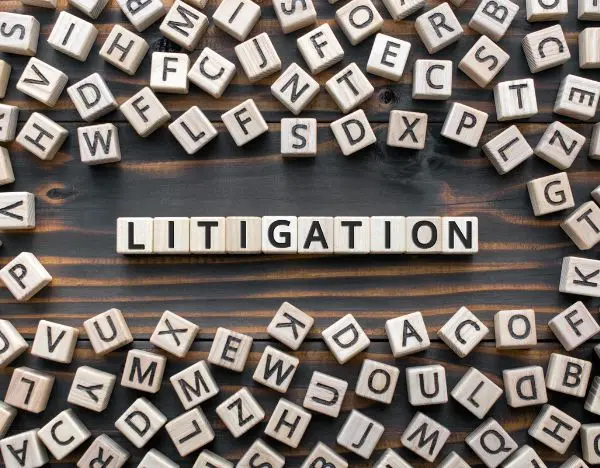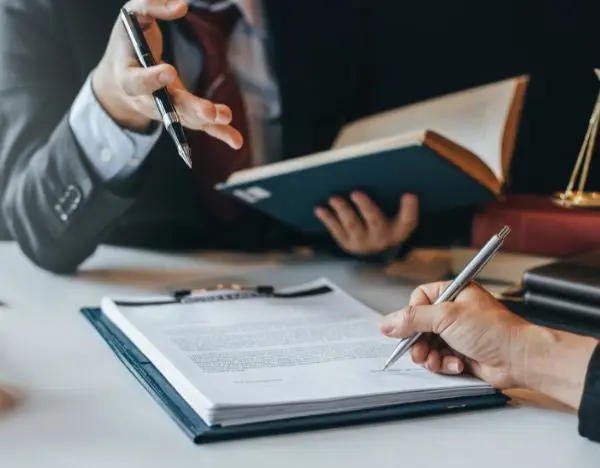Pre-Litigation Steps for Handling Stucco Defects

Stucco, a popular exterior finish for homes and buildings, is chosen for its aesthetic appeal and durability. However, when stucco is not installed correctly, it can lead to significant defects that compromise the integrity of a structure. Taking methodical steps is crucial if you suspect your property has stucco defects before jumping into litigation. Here's a guide from WRZ Law on the essential pre-litigation steps to manage stucco defects effectively.
What is Pre-Litigation for a Stucco Lawsuit?

Pre-litigation refers to the steps and processes before a formal lawsuit is filed in court concerning stucco defects. This phase is critical for setting the groundwork for potential legal action, providing both parties an opportunity to resolve the issue outside of court, and ensuring that the case is as strong as possible if litigation is necessary.
Pre-Litigation Steps for Handling Stucco Defects
Despite its many benefits, improper stucco installation can lead to issues like cracking, bulging, and water intrusion, which is why professional application and periodic inspection are crucial.
1. Document the Defects
Start by thoroughly documenting the defects. Take clear photographs from various angles and during different times of the day to capture the extent of the damage. It’s also useful to document any changes in the defects over time. Keep a log of dates and descriptions of visible changes or any related issues like water leakage or cracks widening.
2. Review Construction and Warranty Documents
Gather all relevant documents related to your property’s construction. This includes contracts, warranties, and any communications with the builders or contractors. Review these documents to understand the scope of work agreed upon and the warranty terms concerning stucco installation.
3. Get a Professional Assessment
Hire a qualified inspector specializing in stucco or a structural engineer to assess the damage. This professional will provide a detailed report on the extent of the defects, the probable cause, and the recommended repairs. This report will be crucial if you decide to proceed with a claim, as it forms the basis of your evidence.
4. Consult with a Construction Defect Lawyer
Before taking any legal action, consult with a construction defect lawyer who has experience with stucco defects. At WRZ Law, our experts can advise you on the strength of your case based on the evidence and documentation you have collected. We can also guide you on the best course of action, considering your jurisdiction's specific laws and statutes.
5. Attempt to Resolve the Issue Out of Court
Often, it’s advisable to attempt to resolve the issue out of court. Contact the contractor or builder and present the evidence of the defect. They might be willing to rectify the issue at no additional cost or negotiate a settlement. This step can be more cost-effective and quicker than litigation.
6. Prepare for Litigation
If out-of-court negotiations fail, prepare for litigation. Your construction defect lawyer will help you organize your documentation and plan the legal strategy. This might include gathering more evidence, interviewing potential witnesses, and preparing expert testimonies.
How To Know You Need a Stucco Defect Lawyer
Identifying the need for a stucco defect lawyer involves recognizing specific signs and situations that indicate your stucco issues are serious enough to require legal expertise. Here are key indicators that you might need to consult a lawyer specializing in stucco defects:
Visible Defects and Damage
If you notice significant visible issues with your stucco, such as large cracks, bulging walls, or areas where the stucco is falling off, it could be a sign of underlying structural problems. These defects not only compromise the aesthetic appeal of your property but may also affect its structural integrity and value.
Water Intrusion and Moisture Problems
Signs of water intrusion are serious concerns, such as damp walls, mold growth, or efflorescence (a white, powdery residue left by evaporated water). Moisture can cause extensive damage to your property and may pose health risks. A lawyer can help address the failure to install proper waterproofing or drainage as part of the stucco system.
Failure of Repairs to Resolve Issues
If you've attempted repairs through a contractor and the problems persist or worsen, this might indicate a deeper, systemic issue with the initial stucco application. Legal intervention can help ensure that all responsible parties are held accountable in such cases.
Expired or Ignored Warranty Claims
If your property is relatively new and should be covered by a builder’s or manufacturer's warranty, but your claims are ignored or unjustly denied, a lawyer can help you enforce your warranty rights.
Complex Legal and Contractual Issues
The contracts involved in building and repair can be complex. If there is ambiguity in the contract terms related to the scope of work, warranties, and responsibilities, a stucco defect lawyer can provide clarity and guidance. They can interpret legal jargon and ensure that your interests are protected.
Significant Financial Impact
When stucco defects threaten to impose significant repair costs or loss in property value, obtaining legal counsel can be a wise financial decision. A lawyer can help you recover damages or negotiate a settlement that adequately covers your losses.
Multiple Parties Involved
Navigating the legal landscape can become particularly complicated in cases where multiple parties (such as builders, subcontractors, and material manufacturers) might be responsible for the defects. A specialized lawyer can identify all potentially liable parties and address the claims appropriately.
Statute of Limitations Concerns
Legal claims are subject to statutes of limitations, which limit the time within which you can initiate legal action. A stucco defect lawyer can ensure you file your claim within these statutory deadlines, preserving your right to seek remediation or damages.
Common Stucco Defects
Stucco, while durable and versatile, can be prone to several defects if not applied correctly or maintained properly. Here are some common stucco defects that homeowners and builders should be aware of:
Cracking
Cracks are the most common issue with stucco. They can range from hairline cracks that are mostly cosmetic to deeper, structural cracks that may indicate serious underlying problems. Cracks can be caused by:
- Settlement or movement of the building structure.
- Thermal expansion and contraction due to temperature changes.
- Improper curing during installation, leading to shrinkage cracks.
Efflorescence
Efflorescence appears as a white, powdery deposit on the surface of the stucco and occurs when water soluble salts are brought to the surface by moisture. When the water evaporates, it leaves the salts behind. This can be due to:
- Moisture intrusion through or behind the stucco.
- Using excessive water in the stucco mix.
Staining
Water stains or other types of discoloration can occur on stucco surfaces due to water penetration and the accumulation of dirt or pollutants. Staining may also be associated with mold or mildew growth in damp areas.
Delamination
Delamination involves the separation of the stucco layers from each other or from the underlying support structure. This defect can result in bulging or even sections of stucco detaching completely, often due to:
- Inadequate bonding between the layers.
- Improper application techniques.
Water Intrusion
Water intrusion is a serious defect where water penetrates through or behind the stucco, potentially damaging the structural integrity of the wall and leading to issues like rot, mold, and interior water damage. Causes include:
- Improper sealing around openings (windows, doors, and vents).
- Lack of or improper flashing installation to direct water away.
Mold and Mildew Growth
Mold and mildew can develop on or behind the stucco if moisture management features are inadequately installed or fail. This not only affects the stucco's appearance but can also pose health risks.
How a Stucco Defect Lawyer Can Help
Hiring a stucco defect lawyer provides invaluable assistance when dealing with stucco-related issues on your property. As specialists in construction law focusing on cases involving building materials like stucco, here’s how we can help:
1. Experienced Legal Advice
We understand the specific legalities related to construction defects. We offer expert advice on your rights and the best legal strategies to pursue. This includes interpreting the terms of any applicable warranties, contracts, and understanding the relevant building codes and standards.
2. Evaluation of Your Case
We will evaluate the strength of your case by reviewing all documentation, including construction contracts, warranty information, and inspection reports. We help determine the liability of contractors, developers, or other parties and advise on the likelihood of a successful outcome.
3. Professional Inspections and Reports
We often work with a network of professional inspectors and engineers who can provide detailed assessments of the stucco defects. These experts can determine the defects' cause, damage extent, and necessary repairs, providing essential evidence for your case.
4. Handling Communications and Negotiations
Dealing with contractors, builders, and insurance companies can be daunting. We take over all communications, ensuring that your interests are robustly represented and that you do not unknowingly compromise your legal position.
5. Settlement Negotiations
Many stucco defect cases are resolved through settlement negotiations rather than going to trial. We can negotiate effectively with the opposing parties to reach a settlement that covers the cost of repairs, any decrease in property value, and other related damages.
6. Litigation
If a satisfactory settlement cannot be reached, we can file a lawsuit on your behalf and represent you in court. We manage all aspects of the litigation process, from filing the suit to presenting your case in front of a judge or jury.
7. Document and Evidence Management
Managing the documents and evidence necessary for a stucco defect case can be complex. We ensure that all necessary paperwork is filed correctly and on time, and that all evidence is properly presented and accounted for during negotiations or in court.
8. Maximizing Your Compensation
Our experience in construction defect law ensures that we know the full range of damages you might be eligible for. We work to ensure that you receive full compensation for repair costs, any reduction in property value, and potentially even for inconvenience and attorney’s fees.
9. Protection Against Future Issues
Beyond addressing immediate concerns, we guide you on how to protect against future stucco problems, including advice on proper maintenance and inspection routines.
As your legal representatives, we play a crucial role in navigating the complexities of construction defects, from thorough investigation and robust representation to achieving a fair resolution. Our specialized knowledge and skills are indispensable in ensuring your property is restored safely and satisfactorily.
Ready to Address Your Stucco Defect Issues?
Don't let stucco defects compromise the value and safety of your property. Contact us today to schedule a consultation and learn how our experienced construction defect lawyers can help protect your investment. Whether through negotiation or litigation, we ensure your rights are fully upheld. Take the first step towards resolving your stucco issues—reach out now!
